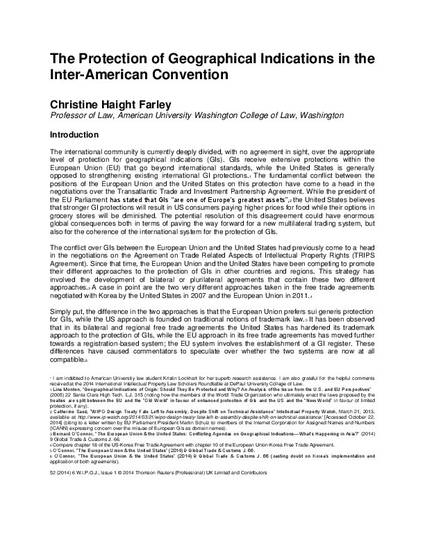
WIPO Journal
The international community is currently deeply divided over the appropriate level of protection for Geographical Indications (“GIs”). This conflict has recently come to a head in the negotiations over the Transatlantic Trade and Investment Partnership Agreement (TTIP). GIs receive extensive protections within the European Union (EU) that go beyond international standards, while the United States is generally opposed to strengthening existing international GI protections.
Given its current stance, it is remarkable that the US has since 1929 been bound by a little known international convention that ensures strong protection of GIs. Since that date, the US has been a member of the General Inter American Convention for Trade Mark and Commercial Protection (“Inter-American Convention”). What is even more astonishing is that, at the time, the provisions on GIs in the Inter-American Convention — a regional agreement instituted by the US — were the most developed and strongest protections available in any international agreement. Given that this agreement is still in effect, it indicates the minimum standards for the protection of GIs in the US. Understanding this agreement therefore offers a sturdier basis for the international negotiation of GI protections.
This article elucidates the history of US protection of GIs. It seeks to uncover the mystery behind the inclusion of a chapter GI protection within the Inter-American Convention in 1929 and the absence of these protections in the 1946 Lanham Act. The article reveals the momentous contributions of Edward Rogers and Stephen Ladas, two of the leading practitioners of US trademark law in the twentieth century. These two men had as sophisticated an understanding of US common law and international obligations as anyone. The resulting texts of the Inter-American Convention and the Lanham Act, both of which they were instrumental in drafting, were no mistake.
Available at: http://works.bepress.com/christine_farley/65/
